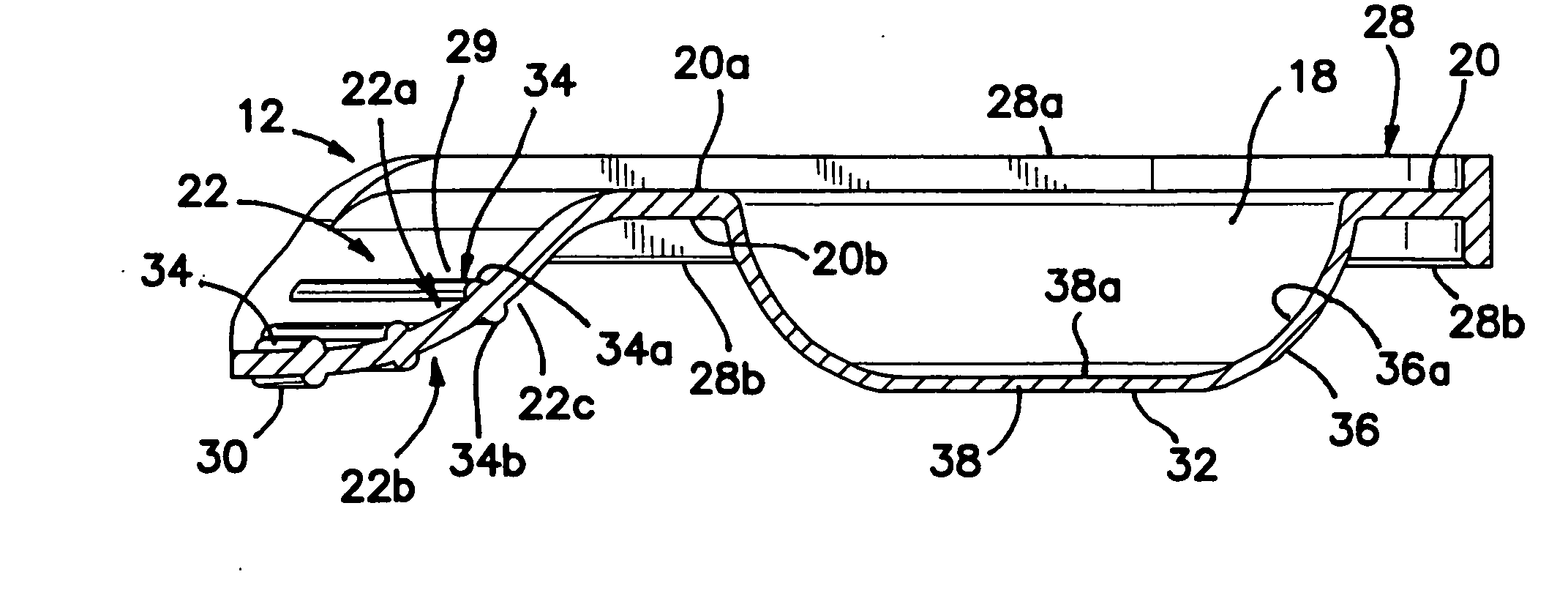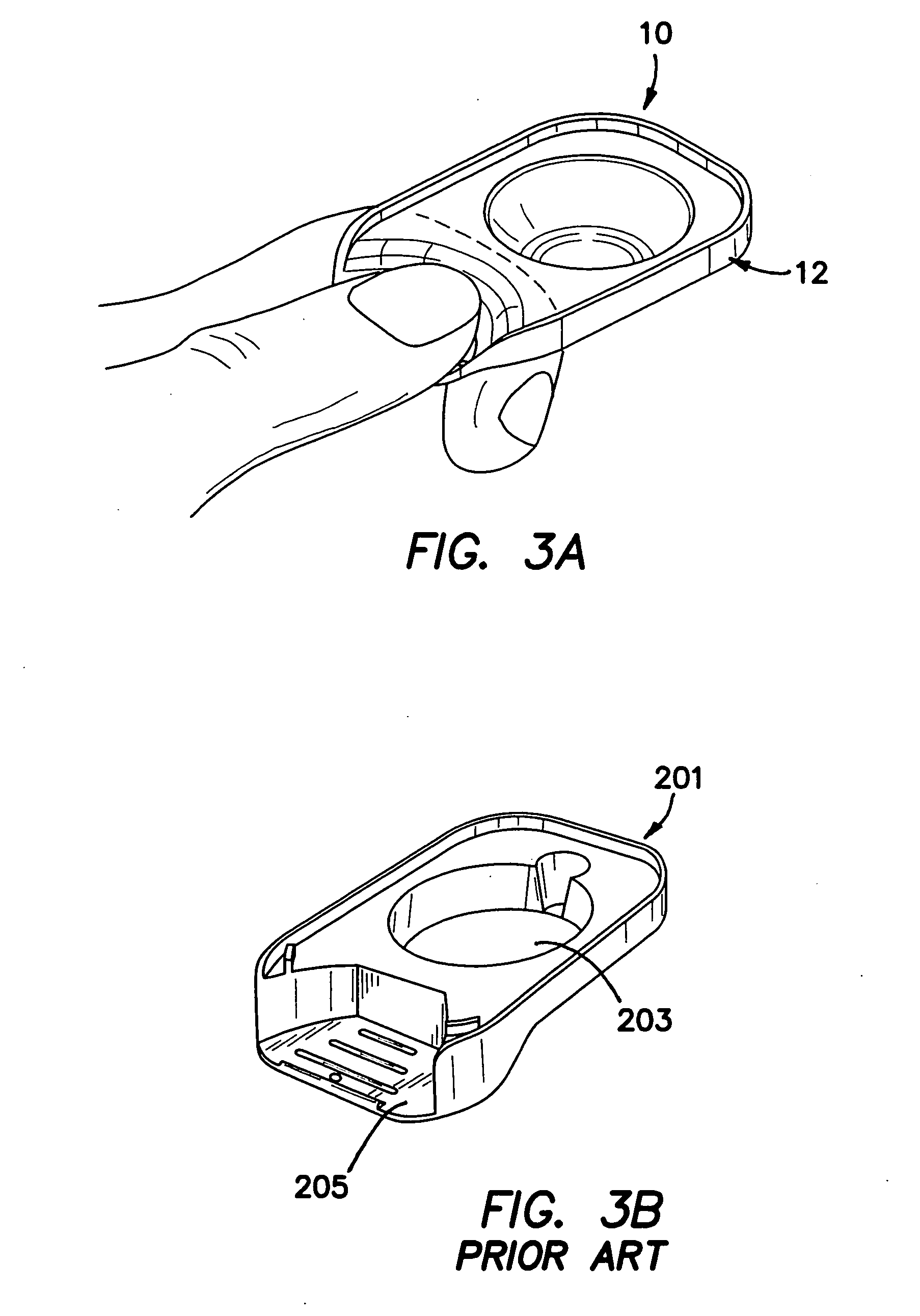Contact lens package
- Summary
- Abstract
- Description
- Claims
- Application Information
AI Technical Summary
Benefits of technology
Problems solved by technology
Method used
Image
Examples
Embodiment Construction
[0036] Turning now to FIG. 1, a contact lens package, in accordance with the present invention, is shown generally at 10.
[0037] The package generally comprises a base member 12 and a cover assembly 14. The invention will be more clearly understood and appreciated with reference to FIG. 2 which shows the package 10 shown in FIG. 1 with the cover assembly 14 removed from the base member 12. As shown, the base member 12 includes a cavity 18 for containing a contact lens (not shown) immersed in an amount of a solution. The term “contact lens” as used herein is intended to embrace an ophthalmic lens which, after its removal from a mold assembly in which it is made, is of a structure, size, shape and power that it can be worn on or in the eye of an individual. The base member 12 further includes a peripherally located flange region 20 at least partially surrounding an opening of the cavity 18, and a grip region 22 which is recessed with respect to the flange region 20. The cover assembly...
PUM
| Property | Measurement | Unit |
|---|---|---|
| Angle | aaaaa | aaaaa |
| Surface | aaaaa | aaaaa |
| Hydrophobicity | aaaaa | aaaaa |
Abstract
Description
Claims
Application Information
 Login to View More
Login to View More - R&D
- Intellectual Property
- Life Sciences
- Materials
- Tech Scout
- Unparalleled Data Quality
- Higher Quality Content
- 60% Fewer Hallucinations
Browse by: Latest US Patents, China's latest patents, Technical Efficacy Thesaurus, Application Domain, Technology Topic, Popular Technical Reports.
© 2025 PatSnap. All rights reserved.Legal|Privacy policy|Modern Slavery Act Transparency Statement|Sitemap|About US| Contact US: help@patsnap.com



